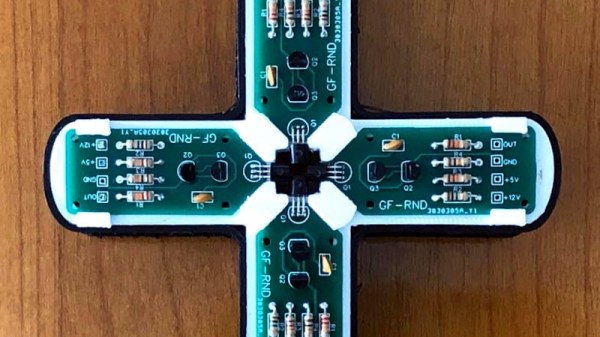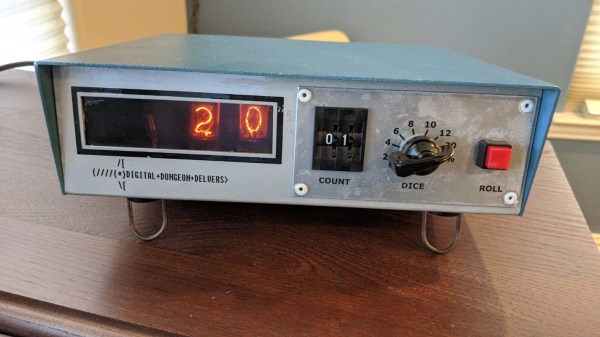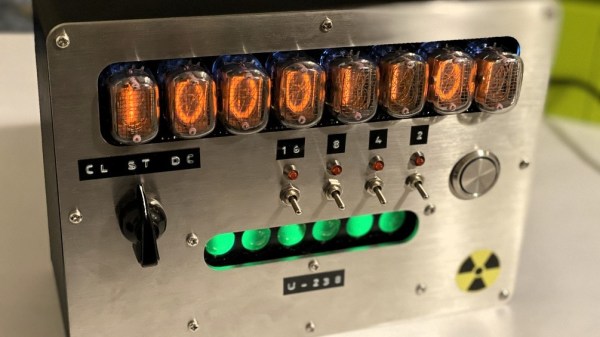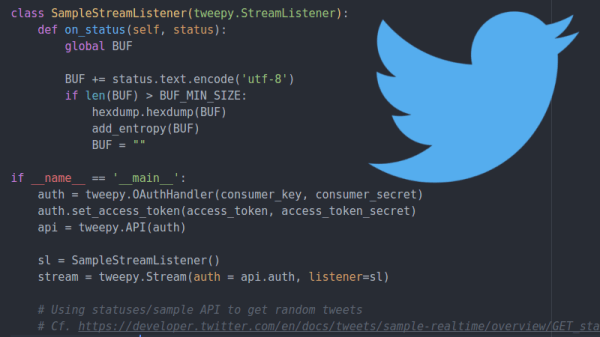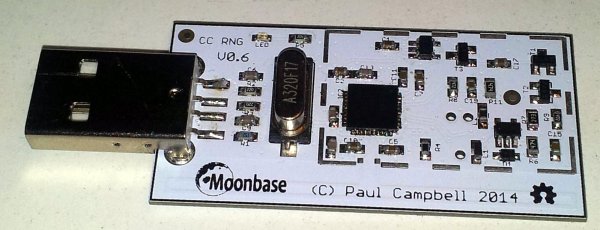Randomness is a pursuit in a similar vein to metrology or time and frequency, in that inordinate quantities of effort can be expended in pursuit of its purest form. The Holy Grail is a source of completely unpredictable randomness, and the search for entropy so pure has taken experimenters into the sampling of lava lamps, noise sources, unpredictable timings of user actions in computer systems, and even into sampling radioactive decay. It’s a field that need not be expensive or difficult to work in, as [Henk Mulder] shows us with his 4-bit analogue random number generator.
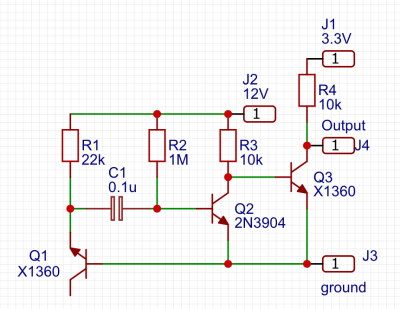 One of the simplest circuits for generating random analogue noise involves a reverse biased diode in either Zener or avalanche breakdown, and it is a variation on this that he’s using. A reverse biased emitter junction of a transistor produces noise which is amplified by another transistor and then converted to a digital on-off stream of ones and zeroes by a third. Instead of a shift register to create his four bits he’s using four identical circuits, with no clock their outputs randomly change state at will.
One of the simplest circuits for generating random analogue noise involves a reverse biased diode in either Zener or avalanche breakdown, and it is a variation on this that he’s using. A reverse biased emitter junction of a transistor produces noise which is amplified by another transistor and then converted to a digital on-off stream of ones and zeroes by a third. Instead of a shift register to create his four bits he’s using four identical circuits, with no clock their outputs randomly change state at will.
A large part of his post is an examination of randomness and what makes a random source. He finds this source to be flawed because it has a bias towards logic one in its output, but we wonder whether the culprit might be the two-transistor circuit and its biasing rather than the noise itself. It also produces a sampling frequency of about 100 kbps, which is a little slow when sampling with he Teensy he’s using.
An understanding of random number generation is both a fascinating and important skill to have. We’ve featured so many RNGs over the years, here’s one powered by memes, and another by a fish tank.

